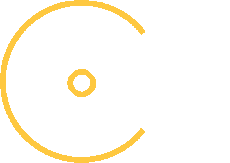Pilot
CoFly provides a novel, low-cost, user-friendly Precision Agriculture platform that attempts to alleviate the drawbacks of limited battery life by carefully designing missions tailored to each field’s specific, time-changing characteristics
- An end-to-end UAV-based precision agriculture platform for coverage and inspection tasks based on vegetation knowledge
- Low-cost & easy-to-use deployment by using off-the-shelf drones
- It simplifies the data acquisition and image processing capabilities, enhancing crop yield management decisions by assisting non-expert users in proper manipulations
- The proposed system is capable of designing coverage & inspection missions for any type of UAVs, integrating field characteristics inside the resulting trajectory, such as irregular field shape and No-fly zones/Obstacles
- Integrated deep learning model for weed detection in crops
Newsletter
CoFly is capable of designing coverage missions for any type of UAVs, integrating field characteristics inside the resulting trajectory, such as irregular field shape and obstacles
The collected images are automatically processed to create detailed orthomosaics of the field and extract the corresponding vegetation indices
A novel mechanism automatically extracts possible problematic areas of the field and subsequently designs a follow-up UAV mission to acquire extra information on these regions.
The toolchain is completed by employing a specifically designed deep learning module to detect weeds in the close-examination flight.
All of these capabilities are packed inside an end-to-end platform, named Cognitional Operations of micro-Flying vehicles (CoFly), functioning on mobile devices including high-level user commands and proper data representations that ease the utilization of UAVs in precision agriculture applications.
Real-Life experiments
For the real-life experiments, a commercial UAV (DJI Phantom 4 Pro) equipped with an RGB camera was used for image acquisition. To evaluate the efficiency of the proposed platform, two scenarios were considered. The first scenario was performed in July 2019 during the first stages of plant growth, while the second scenario was performed in September 2019 during the ripening period, where the cotton fibers had appeared. The main objectives of these two experiments were to (i) identify the optimum flight envelope to acquire the best data and provide an orthomosaic as an accurate map of the field, (ii) extract plant health information (VIs) that could give indications on the year’s harvest and cotton’s growth stage (timeline view) and (iii) detect the existence of weeds in a specific site of crops. Each of the experiment is analyzed and distinguished according to the flight date and cotton’s developmental phase.






